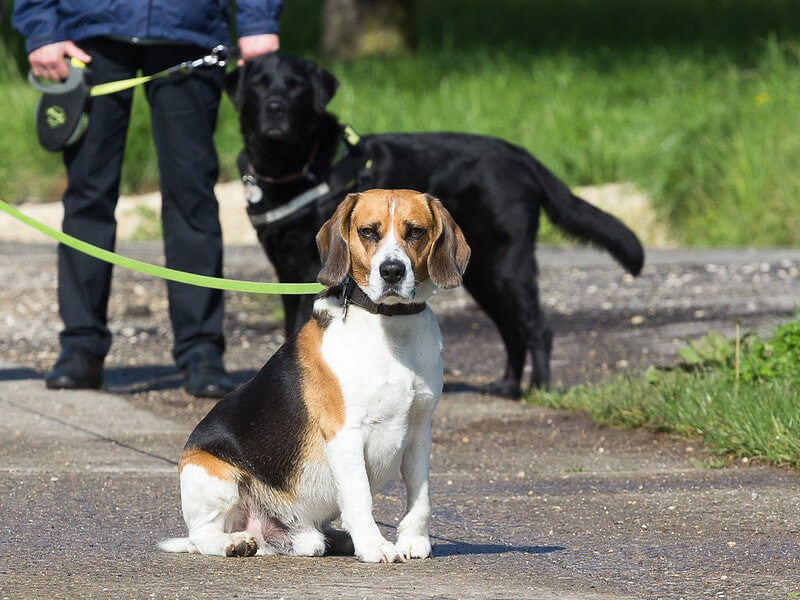It is a nice picture to see a person with a loose leash in his hand and a relaxed dog walking by. In fact, keeping your dog on a leash is an absolutely unnatural requirement. In society, however, it is considered an indispensable aid for dogs and people. It is not always easy to convince a dog that he is walking on a loose leash. We reveal how it works.
First Step: Putting on the Leash

Many dogs refuse the leash. For them, it means that when the leash is put on, the fun stops. It is pulled and the dog is left breathless. Therefore, in the first step, everything positive for the dog should be linked to the leash. When feeding, petting, playing, and other activities, the leash is on. The dog learns to be attentive because in this case leash means something exciting with his human.
Many dogs learn when they are puppies that it is worth pulling on a leash. The dog wants to go to another place, to another dog, or to the dog meadow very quickly. Man follows him obediently. In this way, the dog learns that it is worthwhile to pull in a different direction. This can be exhausting for daily walks.
The Start of Training on a Leash
It’s good to start in an environment that is as distraction-free as possible. That makes it easier for the dog. This can be the living room or the garden. In the beginning, the dog is spoken to briefly and then set off with the dog on a leash. If he walks along relaxed on a leash, reward him. That can be after just one step. It is important that the dog becomes aware of the speech. The reward can be praise and a treat or just praise if no treats are to be fed.
If the dog moves again afterward, he will be spoken to again briefly. If there is no reaction from the dog, the person should turn away clearly but not suddenly. The dog doesn’t get any more attention. The man waits for the moment for the dog to walk more loosely again. It may be that turning away is necessary several times. Since the dog does not yet know what to do, a quick click of the tongue or speaking before turning away would be fair. So he gets the opportunity to follow.
If that works, a signal can be added. A new signal should be chosen if one has already been practiced that did not work well. The new signal should definitely have a positive connotation. “Foot” is negative for many dogs, as they have often received a lot of corrections here. It is, therefore, better to use a new signal that is used whenever the dog shows the desired behavior.
If everything goes well, the changes in direction can become less and less and the straight stretches longer. In addition, the training can be relocated to places with more distractions. The level of difficulty should always be chosen so that the training still works. If the places are too interesting, the dog is too distracted. One should go back to a simpler place.
Difficulty Walking on a Leash
Being on the leash is certainly not an easy task. It is extremely complex. It usually starts with the fact that the leash is not precisely defined. Does it now mean that the dog is on a leash if it has the radius of its leash length and can use it? He can sniff, change sides or look around. Or should he run next to people with high concentration, as with “foot” and adapt accordingly to the pace? He should concentrate on the face or hand of the person and walk with his shoulder at knee height. However, that would be too strenuous for the dog for a walk. It would overwhelm his ability to concentrate. In addition, he would have no leeway to pursue his own needs. The leash should be the first model.
Dogs are naturally twice as fast as humans on average.
It would be an imposition for the dog to constantly adapt to the slow pace of humans. Too short a leash would be an imposition for him. For the dog, the leash is a limitation. In addition, walking on a leash is an uninterrupted exercise in impulse control for the dog. The leash should therefore at least be long enough that the dog can still walk well with humans at its own pace, even if the latter is much slower.
With Patience and Praise on Foot
Being on a leash is not an easy thing. But with the right and consistent training, it’s not rocket science either. If you get stuck, you should get help from a dog school or a dog trainer. With the necessary amount of praise, consistency, and patience from the owner, any dog will be able to walk properly on a leash. For one, however, it can sometimes take longer.

